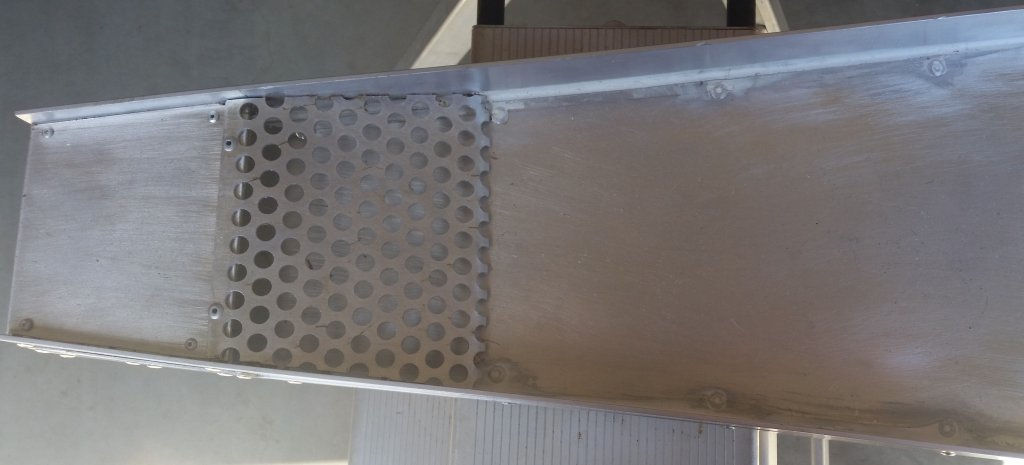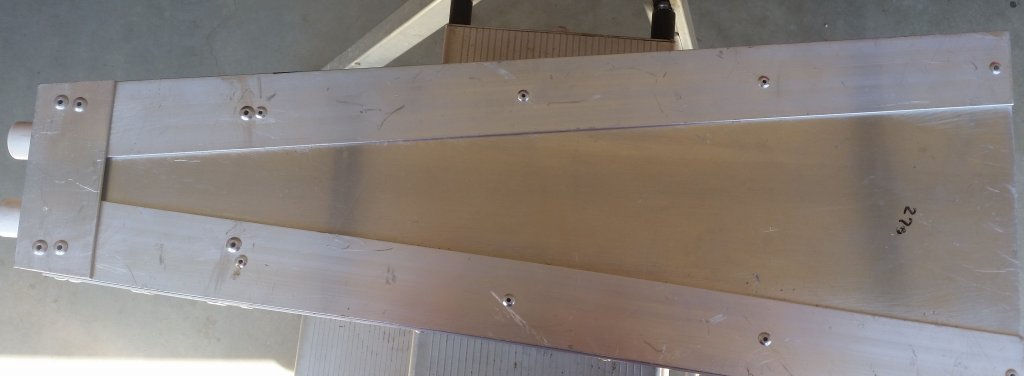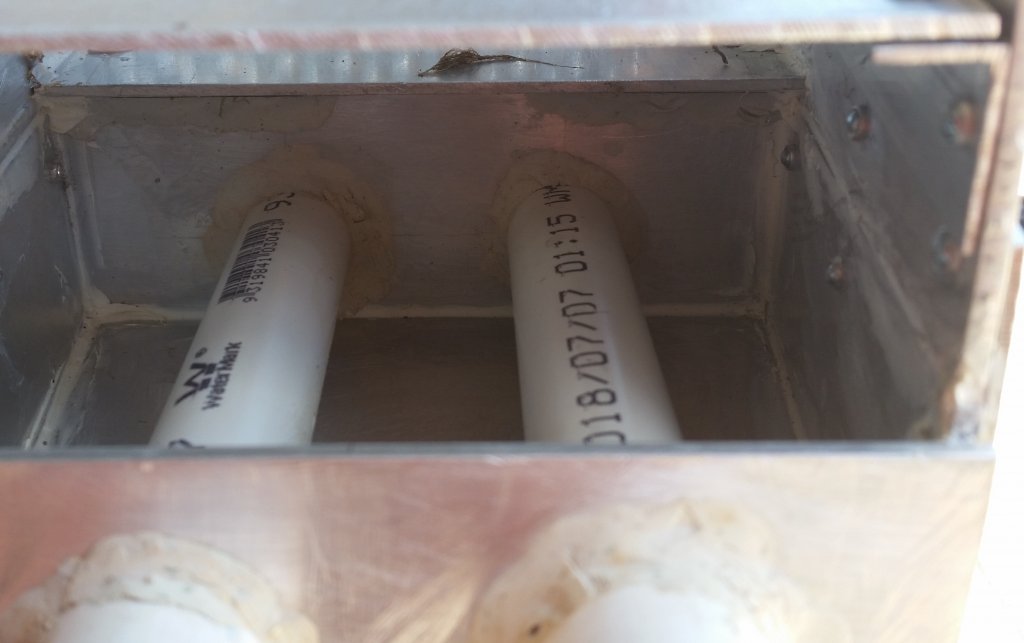Just Starting
Ok here are measurements. first of you don't have to be mm accurate. these measurements are what mine ended up as. you should however keep the proportions close. Materials were 2mm aluminium plate for bottom of both the top chamber and the bottom chamber including capture box and top discharge plate, 50mmX50mm aluminium angle 3-4mm thick I think from Bunnings. I got the deck plates from a metal place as offcuts. The punch plate may be difficult to find. I found mine at a metal recycling dump. you could use grizzly bars as in the original Croc. Other smaller angles from Bunnings to support top plate and discharge plate. The top plate and collection box must be sealed with marine grade flexible water proof corking. The bottom plate and discharge plates need not be sealed. where the tubes project into the lower deck and out of the discharge end plate also must be sealed and the discharge end I capped. At both ends where the tubes project through the walls I sealed the edges with Selleys Knead It Aqua. The collection box end was a bit of 50mm angle. The upper end of the collection box is tricky and must be a really good fit. I used 4mm thick offcut of aluminium I had handy. I also used 2mm plate offcuts to cover gaps between top and lower decks over the collection box area. make sure everything is smoothly sealed in the box. everything was riveted and in the collection box and top plate I plugged and sealed the rivets. Pictures would help but I cannot make them work on the forum. DM your email and I will send some and maybe you could post them for me.
Overall dimensions
Width at flare 255m
width at discharge 120mm
Height 100mm each deck 50mm high
top plate length 440mm
bottom plate length 630mm
top plate overlaps bottom plate at flare by 20mm. The top plate is shorter as it ends just after the collection box starts. it must extend beyond where the collection box upper end wall starts so it acts like a riffle when material enters the box.
Top discharge plate
width at feed end 135mm
width at discharge 110mm
length 120mm
distance from top plate below sidewall 18-20mm
Screen
width at upper end 165mm
width at lower end 135mm
length 140mm
hole sizes 10mm
if you are using punch plate cut the holes through the middle horizontally where it sits on the top plate and steepen the angle of the punch plate there a little just at the last half holes so material can go through.
Tubes
diameter 20mm
holes 3/16 every 20mm, 5 on one side and 4 on the other alternating. these holes face down and to the side. not straight down or horizontal. the idea is to keep the material agitated to help the flow coming from the top plate.
length of tubes 150mm or so. they must protrude into the lower deck around 10mm or so so any material that does go into the chamber does not enter and block the tube holes.
height of tubes above box base 3-4mm
collection box discharge wall height 50mm
Also remember when you first use it you absolutely must charge the collection box. run several scoops of gravel through so you end up with a layer of material in the bottom of the chamber, preferably do not use pay dirt as you will blow any gold right out until the box is charged. when you stop running the sluice or at least when the water going through it stops you must empty it as the material in the box will settle.
hope this ill be a start. remember alway measure twice and cut once. the whole thing can be done with hacksaw, metal cutting blade of jig saw, files, rivet gun and various size rivets, drill and metal cutting hole bits for the tube walls.
Araluen







